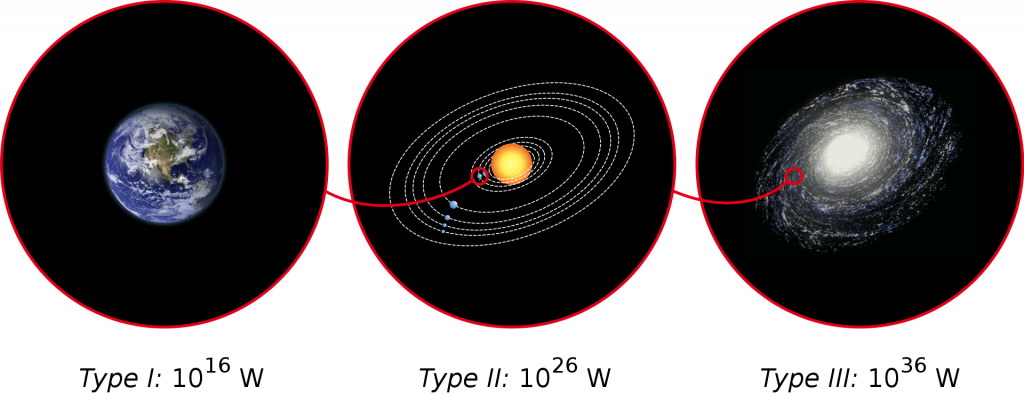One of the most challenging questions to answer when confronting the Fermi Paradox is why exponentially scaling technologies haven't taken over the Universe by now.
Commonly known as von Neumann probes, the idea of a self-replicating swarm of extraterrestrial robots has been a staple of science fiction for decades. But so far, there has never been any evidence of their existence outside the realm of fiction.
That might be because we haven't spent a lot of time looking for them – and that could potentially change with the new Five-hundred-meter Aperture Spherical Radio Telescope (FAST).
According to some recent calculations, the massive new observational platform might be able to detect swarms of von Neumann probes relatively far away from the Sun.
Those calculations, carried out by Dr. Zaza Osmanov of the Free University of Tbilisi in Georgia, showed that von Neuman probe swarms for highly advanced civilizations could be visible in the radio spectral band that is the focal point of FAST.
To help in the search, Dr. Osmanov used two frameworks to bound the potential solution. The first was the idea of Kardashev civilizations, while the other is estimates of the thermal and electromagnetic emissions profiles of any such swarm.
The Kardashev scale is a well-understood concept in science speculation – it focuses on a civilization's overall energy use, with different milestones (Type I, Type II, or Type III) correlating with the utilization of the entire energy output of a planet, a star, and a galaxy respectively. Currently, human civilization is thought to be around a .75 on the Kardashev scale.
But given the relatively limited amount of time humans have spent developing on the planet, there is a very high likelihood that, if life exists elsewhere in the galaxy, it will have had much longer to evolve and develop technologically. Longer technological development times lead to a higher likelihood that a civilization would reach K-II (star energy) or even K-III (galaxy energy) levels of development.
When a civilization has that much time to work on new technologies, it most likely will have developed the ability to create self-replicating machines, like a von Neumann probe, as part of that technological development process.
Once that technological cat is out of the bag, it is almost impossible to put it back in. If even one civilization released them upon the galaxy, the self-replicators would likely begin to expand to every available resource, focusing solely on their own reproduction.
According to Dr. Osmanov, though, we would at least be able to see any such path of destruction coming. Like all imperfect systems, those self-replicating machines would emit some form of radiation, which, after some simplifying assumptions, Dr. Osmanov calculates should be visible in the radio spectrum.
Specifically, it would fall right in the middle of the spectrum that FAST is designed to pick up.

Knowing that it will be possible to detect a swarm is only slightly helpful, though – knowing how far away you can detect it is much more useful. Like with potentially dangerous asteroids, the sooner we can be made aware of the impending doom, the better – to combat it at least.
To try to calculate the distances, Dr. Osmanov made some more simplifying assumptions, such as the maximum power output that could be expected based on the Kardashev level the civilization has achieved. For example, a Type II civilization wouldn't have a von Neumann cluster emitting more light than their entire energy utilization level, as defined by the scale.
With those additional assumptions, Dr. Osmanov finds that FAST could potentially detect a self-replicating robot swarm for both Type II and Type III civilizations.
Considering the expected sensitivity of FAST's instrumentation, it should be able to find any such swarm within about 16,000 light-years for Type II civilizations, meaning any Type II probes would be visible within the closest 15 percent of the Milky Way.
On the other hand, a swarm created by a Type III civilization would potentially be detectable within a 400 million light-year bubble – encompassing most "nearby" galaxies.

Above: Graphical depiction of the Kardashev scale, with associated power consumption levels.
So far, Dr. Osmanov's paper has only been published on arXiv and does not appear to have been accepted by an academic journal, meaning these calculations have not been peer-reviewed. But they still offer a fun thought experiment and point to a potential detection mechanism for some black swan-like events.
While it might be comforting to know that we would be able to see any such encroaching danger with FAST well before it threatened Earth, there remains the question of what happens if we don't find any? What does that mean for our place in the Universe or the development of self-replicating technology?
If you want to learn more about that, take a look at the ongoing Beyond the Fermi Paradox series here at UT, written by Matt Williams. It's a thought-provoking look into some of the implications of some of the biggest questions out there.
It might even be engaging enough to entertain a swarm of self-replicating robots.
This article was originally published by Universe Today. Read the original article.



No comments:
Post a Comment